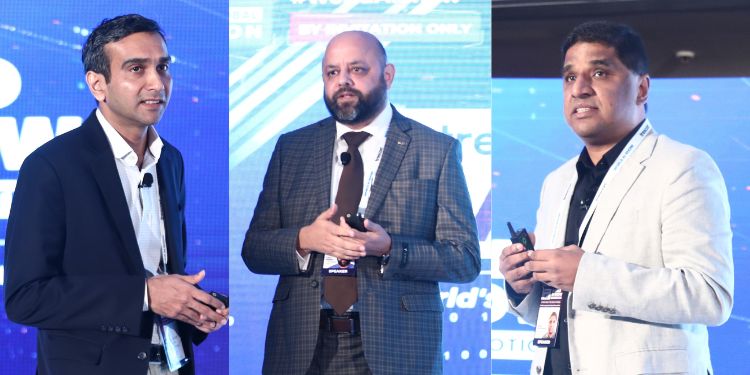The 39th edition of World AI Show held on 23 November 2022 in Mumbai highlighted the endeavours and advancements in the AI ecosystem in India. The country is adopting AI quickly due to a thriving IT sector and an increase in the use of cloud-based apps, opined experts.
Exploring prospects of future technologies, professionals from the AI and ML landscape discussed their applications and their scope in the future, in India’s ‘new normal’.
Lalit Khosa, Sr. Director – Sales, Exotel, a cloud telephony platform, explained how conversational AI can contribute through the customer journey.
There are two ways, he explained. One, if the customer is trying to reach through Google or IVR there can be a deflection towards a Whatsapp. These are the places where conversational AI can help the consumer to give that sort of nudge to go ahead with the process of purchase or whatever he is trying to achieve. Else, if the customer is using an app or website and is trying to browse for again a proactive contextual input, an AI bot can be given which eventually can be of huge potential, he added.
“Further going one step ahead, there are two possibilities: a) Customer goes through the purchase and everyone is happy. b) Customer cannot make a decision and drops off; there is a proactive contextual nudging that we give or it can be a human agent handover, and Whatsapp push message notification can be provided,” said Khosla.
He enlisted four broad colours of the customer life cycle as: generating a lead, onboarding the customer, supporting trust, and then retaining the customer.
“Industries that can be completely driven by conversational AI are e-Commerce, delivery and logistics, banking and financial services, ed tech services, and travel and hospitality,” he added.
Among speakers was Gokul Gopalakrishnan, Senior Vice President & Business Head, Asia – Uniphore, a 14-year old global conversational automation technology company incubated at IIT Madras.
He noted that while the percentage of voice to other transactions have gone down, on actual volume voice conversations have gone up.
“Simple queries, requests that can be automated on the self-serve but complex queries as well as complaints can never be automated; on the inbound and outbound side of it a sale can never be completed,” he explained.
When those calls get transferred to an agent, the company’s U-Assist product kicks in, listening in real time while the agent is talking to the customer and provides insights and work flows on what the next best action should be.
Another solution from the company U-Analyze analyses calls that are recorded.
“Using U-Analyze you would find out what type of calls have historically come in and then would start to automate it on self-serve so the mundane calls can get self-served. So the system learns from itself, that’s the AI,” he added.
Prashant Kaddi, Partner, Deloitte India, noted, “Some standard problems we all try to solve, in our thesis each one of them has one critical problem that we need to surmount. There is customer value match, the whole personalisation, how do we extract more value from a customer base by helping them ladder up to a better set of products, solutions they can use from us whether it is B2B or B2C. We know everything about the customer, we have a refined segmentation, we know who has the propensity to buy something, and then we have an engine that recommends what we should propose to them and how it will be received best. Challenge is this journey takes a long time.”
Underlining the importance of testing a hypothesis (with AI) among prospects and reducing the duration of campaigns, he explained, “Instead of a typical five to six-month time frame, eventually this is a campaign that goes out to few customers. The time can be crushed to six weeks because there is a play book. Instead of looking for what data we have about the customer, we are trying to look through a playbook saying these are the 200 data points we want, what do we have out of it? Maybe we don’t have all 200, we have only 50 or 80. Then the idea is how we create proxies. From the trends and absolute values, we get insights which will be able to derive some fact – from there how do we segment, create benchmarks? The business results are quick.”
He revealed that a very large global FMCG giant has mandated the consulting firm with creating a product-wise enabled solution for forecasting, which it wants to employ and internalise.

















